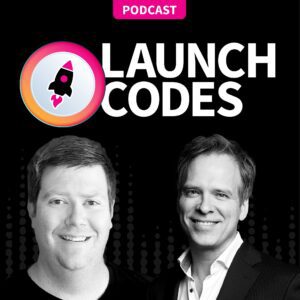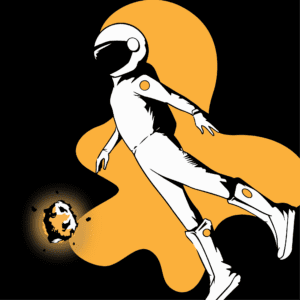TLDR: Whether leadership is looking to grow or expand into new service areas, new goals can change which tools are relevant to your business. Speak with your marketing ops team to understand if the proposal requires more time or budget. Before making the shift, visualize how each piece of your tech stack fits together to gauge any impacts. If a new tool is needed, allow for overlapping contracts, time to map out new processes and train people on a new system while they’re still using the current one.
Strategy and technology
The link between strategy and technology is essential for any leader to understand:
- Your strategy sets the direction for the business and shapes your goals.
- Your tech stack is the means by which you achieve them.
It’s easy to get attached to particular tools, but strategic intent gives purpose to each piece of tech.
Your stack is fluid. It evolves to solve problems and provide capabilities as your business needs change—a quality that’s especially clear when strategic change is on the way.
Whether leadership is looking to grow or expand into new service areas, the establishment of new goals can potentially change the tools that are relevant to your business.
If martech leadership is working on or has recently announced a new strategy, this Tough Talks Made Easy is for you. You’ll learn how to discuss the impact that strategic changes have on technology, so you can invest the time and budget you need to get your team and stack in shape.
Fitting the pieces together
First, your boss should consult with people around the business to better understand the impact of a proposed change. This ranges from director-level and management to the people in MOPs handling tools on a regular basis. Having these conversations early into the planning phase can reveal if a proposal demands more time or budget than first anticipated, along with any additional hires or new pieces of tech.
While putting together a plan, leadership needs to know exactly how your tech stack works across the whole organization. Changes to technology can reverberate across the ecosystem and cause unexpected trouble.
If your new strategy involves using a different marketing automation platform, for example, you then have the task of replacing a platform with lots of data tied into it and integrations with many other tools. Certain tools you’re using might not integrate smoothly (or at all) with the new platform—and that means new problems.
The message to impart here is to hit pause on a big shift until you’ve mapped out the tech stack across your business.
- visualize how each piece fits together to establish the tools you have
- understand why teams use the tools they do, and
- verify how each tool integrates.
By doing so, you’ll better gauge the impact of a strategic change on technology. As an added bonus, you can spot opportunities to consolidate tools with overlapping use cases and save on budget.
Before surveying the market for new tools, ask your leadership to lay out their specific needs.
- Is there a particular problem you’re looking to solve?
- New capabilities to add?
- Integrations that a new tool should have?
This promotes intentional, goal-driven tool adoption.
Sometimes, the trial period for a new tool isn’t enough to accurately determine the fit for your business. Limitations can become apparent after the demo and trial are complete. The clearer they are at establishing the necessary components of a new tool, the better equipped you are to find a tool that’s fit for the strategy.
We wrote an article about explaining your tech stack overhaul to your boss that may also be helpful.
Include a human touch
For the time and effort it takes to craft a strategy, punctuate it with clear goals, and make the appropriate changes in technology, the plan risks coming off the rails without a human touch.
You need people with the right skills and time allotted to make sense of any new tools and use them constructively.
When scoping out new technologies for the business, you’ll find that salespeople often understate the difficulty of learning a new tool and the time required to see real results.
The learning curve for the likes of a CRM, CMS, or MAP is steep. Realistically, it’s a job for multiple people. Adding a complex, foundational system onto the plate of a two-person MOPs team, in addition to their current responsibilities, is a recipe for burnout.
If your boss’ new strategy requires significant extra work or a new set of skills, the most sensible step they can take is to budget for new hires or an agency’s help — learn how we can help.
Likewise, leadership wants to achieve a particular result as fast and cost-efficient as possible.
Throughout a tool’s implementation period, allow for:
- overlapping contracts
- time to map out new processes and changes to data architecture, and
- training people on a new system while they’re still using the current one.
Optimize your budget
If you can only budget several hours a week for your MOPs team to learn a new system, the timeline to understand how a new tool works and integrate it into the team’s day-to-day workload will naturally take several months.
This learning curve is something to consider when setting strategic targets.
And while your boss sets the strategy, the tactics are best left to the MOPs team.
The learning process is all about trial and error. Experimenting and finding out the best ways to use a tool to do the things you need.
The people using the tool will eventually understand better than anyone which methods work and what results are realistic. Leadership should trust them to decide how to execute daily and encourage their feedback to shape performance goals.
The takeaway
While strategy is your guiding star, the capabilities of your tools and the people in your MOPs team are what make achieving goals possible.
Plan for changes in technology and human resourcing as early as possible when developing a new strategy, and leadership can expect success.
Need some support? Drop us a line, we’re here to help!
Never miss an update! Follow us on LinkedIn.

